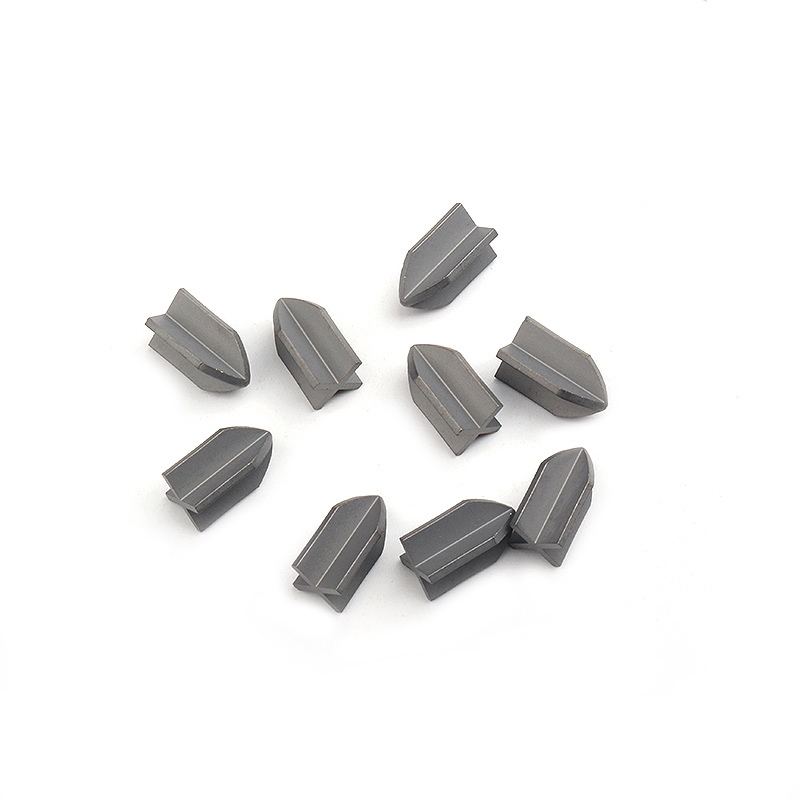2025-11-14
Machining operations often involve high temperatures, strong cutting forces, and continuous wear, which can significantly shorten the lifespan of tools. To overcome these challenges, many manufacturers and machinists rely on Carbide Brazed Tips and Carbide Tips for their superior durability and wear resistance. These cutting components have become fundamental in various machining tasks where maintaining tool life directly impacts productivity and cost efficiency. Understanding how they enhance longevity helps operators make informed choices for their specific applications.

Carbide Brazed Tips consist of a tungsten carbide insert permanently bonded to a steel body through brazing. This process creates a strong metallurgical joint that withstands high stresses during cutting. The tungsten carbide portion provides the necessary hardness and resistance to abrasion, while the steel base offers impact strength and flexibility. This dual-structure design allows the tool to handle both heavy cutting loads and vibration without fracturing.
Carbide Tips, on the other hand, are sintered materials made by combining tungsten carbide powder with a metallic binder such as cobalt. The resulting composite offers a balance between hardness and toughness, ensuring stable cutting even under continuous operation. When these tips are brazed onto tool holders, the combination delivers long-term stability and consistent performance, especially in high-speed or high-volume machining environments.
A key factor influencing tool longevity is wear resistance. Tungsten carbide is known for its ability to maintain a sharp cutting edge even after prolonged contact with hard materials. This property allows Carbide Brazed Tips to retain their geometry and cutting efficiency longer than traditional steel tools. The microstructure of carbide resists abrasive wear, crater wear, and flank wear, which commonly occur during metal cutting.
In demanding operations such as rough turning or milling of cast iron and alloy steel, tool deformation can cause dimensional inaccuracies and frequent tool changes. Carbide Tips effectively reduce this problem by maintaining rigidity and preventing edge rounding. The result is more consistent part quality and fewer interruptions for tool maintenance.
During high-speed machining, the cutting zone can reach temperatures that cause conventional tools to soften and lose hardness. Carbide Brazed Tips offer excellent thermal stability, maintaining their mechanical properties even at elevated temperatures. The tungsten carbide segment acts as a heat barrier, while the steel shank absorbs and dissipates excess heat. This combination reduces thermal stress at the joint and prevents premature tool failure.
This capability is particularly useful in continuous or automated machining processes, where cooling intervals are minimal. By resisting thermal wear, these tips extend operational cycles, helping workshops maintain steady productivity without frequent stoppages for tool changes.
The brazing process plays a crucial role in ensuring the durability of Carbide Brazed Tips. The filler metal used in brazing creates a uniform and secure joint between the carbide and steel portions. This joint must withstand both mechanical loads and temperature fluctuations during cutting operations.
Moreover, the smooth transition between the carbide and steel layers ensures even stress distribution across the tool. This structural integrity not only increases tool life but also enhances machining stability, resulting in more precise cuts and improved surface finish.
Tool longevity is not only about hardness but also adaptability. Carbide Brazed Tips perform well across a wide range of materials, including cast iron, carbon steel, and non-ferrous metals. The availability of different carbide grades allows users to select the right balance of toughness and wear resistance for specific applications. Coarser grain carbides provide better impact resistance for roughing operations, while finer grain types offer improved edge retention for finishing tasks.
Carbide Tips also integrate easily with different machine setups, making them a flexible solution for varied production needs. Their resistance to both mechanical and thermal wear means they perform effectively even when machining parameters fluctuate, such as in variable feed rates or cutting depths.
Longer tool life directly translates to economic advantages. Since Carbide Brazed Tips resist wear and deformation, they require fewer replacements over time. Additionally, many brazed tools can be re-tipped or resharpened after extended use, further extending their service life and lowering material waste.
Proper maintenance practices can enhance these benefits even more. Regular cleaning of tool holders, accurate alignment, and controlled cutting parameters ensure that the brazed joint remains intact and that the carbide tip operates efficiently. Consistent monitoring of wear patterns also helps determine optimal replacement intervals, preventing sudden tool failure and protecting workpiece integrity.